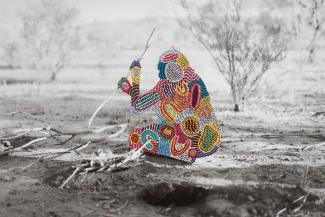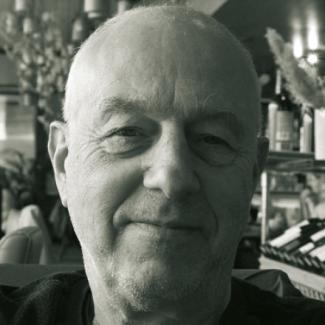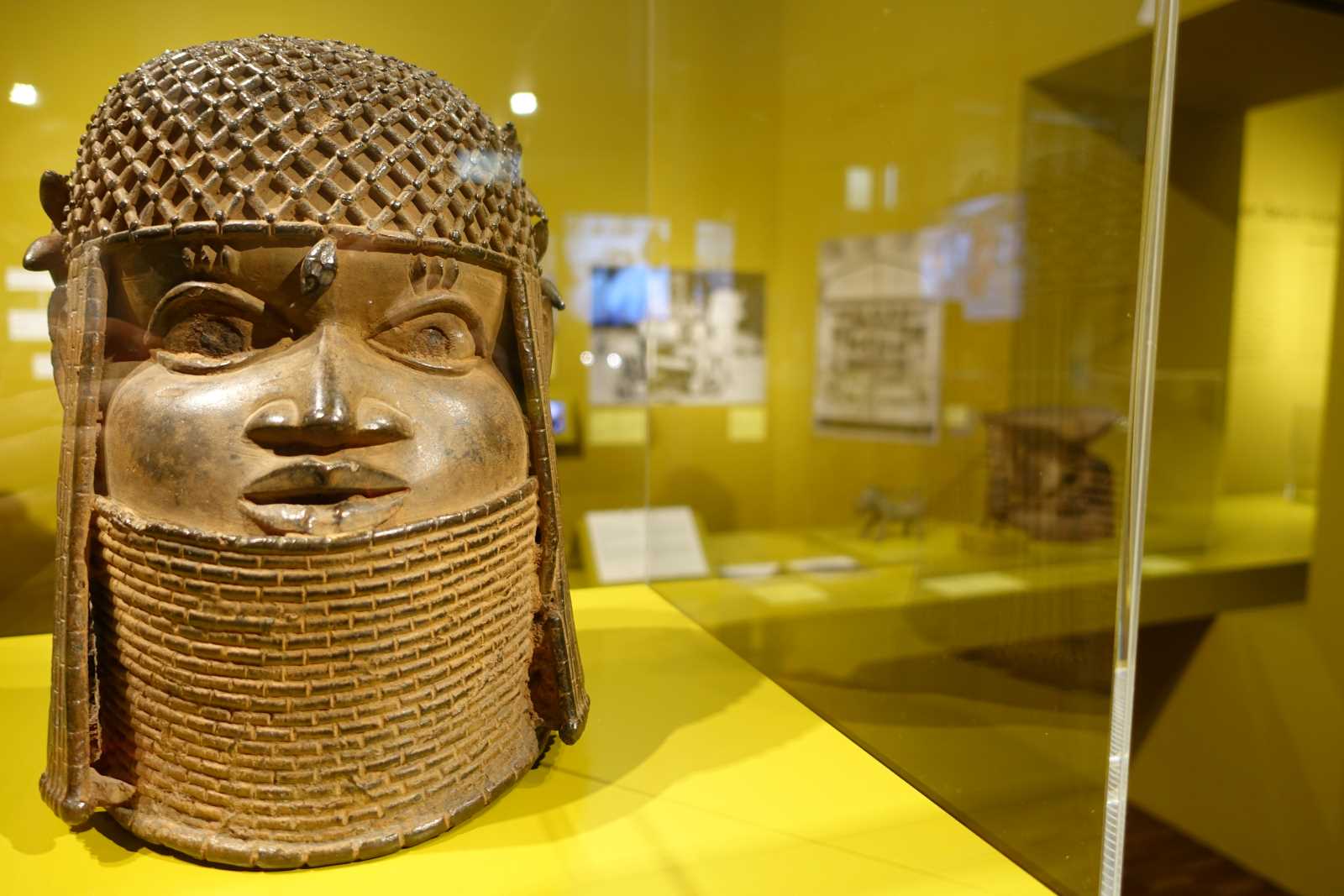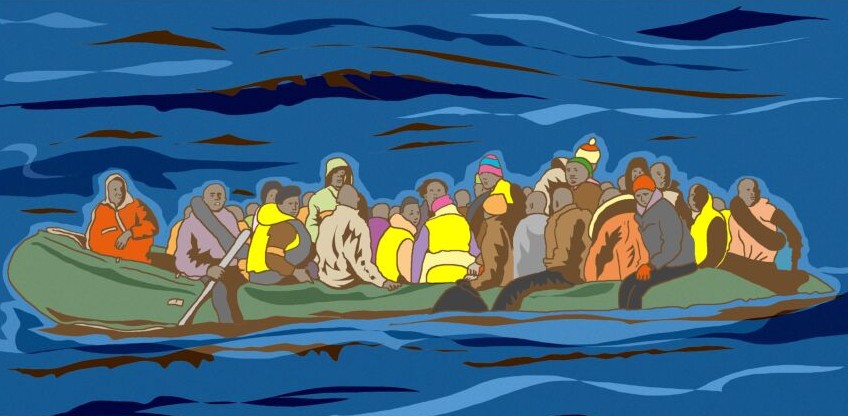Indigenous identity
Indigenous people make themselves heard through art

In recent years, Germany has increasingly focused on coming to terms with its own history as a colonial power. Among other things, questions of redress for injustice have been discussed, for example in the context of the genocide perpetrated in the former German colony of South-West Africa. There has also been a broad debate on the restitution of cultural assets. In its wake, German museums such as the Hamburg Museum am Rothenbaum – Kulturen und Künste der Welt (MARKK) and the Rautenstrauch-Joest-Museum (RJM) in Cologne have returned Benin bronzes to Nigeria.
This discourse must be enriched by indigenous perspectives in particular. Ethnological exhibitions play an important role here, as demonstrated by a show at the RJM, which can be seen until 7 April 2024. Entitled “Revisions made by the Warlpiri of Central Australia and Patrick Waterhouse”, it features the results of years of artistic collaboration and presents them for the first time to a European audience.
Those involved in that collaboration included representatives of the Warlpiri, one of the First Peoples of Australia. Their homeland is the steppes of Central Australia, where artistic expression is nurtured at self-managed art centres. They collaborated with the British photographer and artist Patrick Waterhouse, who lived and worked with Warlpiri communities for five years.
The contradictions between indigenous and European cartography in Australia are the starting point for the project. Otto Jungarrayi Sims, one of the artists, points out that the Europeans dissected the country with arbitrary lines and imposed state borders. “They didn’t understand the diversity of indigenous groups inhabiting this country. They did not know we had our own stories, songlines, boundaries, and nations,” he says. Songlines are mythical routes passed down by song, which together map Australia from the perspective of the Aborigines connecting different time levels.
Before the collaborative art project with the Warlpiri started up, Patrick Waterhouse spent several years travelling around Central Australia. “I met First People artists from 16 to 90 years old and a multi-layered dialogue developed with families of artists speaking for themselves and their people,” he explains. The Aboriginal people allowed themselves to be photographed by Waterhouse and then worked on the images using their traditional dot painting technique.
That technique of painting and overpainting in layers can be traced back to prehistoric times. The Aborigines passed it on from generation to generation right up to the present day. The title of the exhibition “Revisions” is a reference to this: more than 50 predominantly female Warlpiri artists used the technique to paint over and decorate a range of documents created by those who came later to Australia – and thus place the objects in a new locational context.
Reclaiming identity
The documents include maps, satellite images, postcards, photographs of animals and landscapes. Over time, comic illustrations and paintings were added, many of them from museum and auction house archives. The RJM also contributed images from its Australian collection. A painting of James Cook, for example, is embellished with a single red dot on his nose. One exhibition wall features a display of overpainted, almost iconic photographic portraits of Warlpiri, expressing the people’s deep connection to their country.
“The Europeans brought their documents with them, in the form of newspapers, maps and texts,” says Otto Jungarrayi Sims. “This is our history. We have no paper. We carry our documents and our knowledge within us. In our hearts and minds.”
The diversity of the stylistic idiom in which the artists present their narratives is astonishing. Among the exhibits are three large, revised flags. They are positioned around the room in display cabinets and appear to float ten centimetres above the floor. Flags were used by the colonial conquerors in Australia as symbols of power and ownership. Now, Aboriginal people are using them in an artistic exploration of cultural oppression.
“Hijacking” objects to revise and redefine them is very different from cutting up, tearing down or replacing a national flag – or from throwing paint at a painting, as climate activists in Europe have recently done on a number of occasions. The exhibition does not present simple acts of erasure; the works it features are a manifestation of creative synthesis. The revised paintings symbolically combine the old and the new, people, animals and landscapes, reality and vision.
This revision fits in with global movements of marginalised and activist groups that use art to draw attention to grievances. For indigenous groups, this is primarily about the reconquest and reorientation of their identity, which has been actively or indirectly suppressed for decades through colonialism and exploitation.
Each picture bears the individual signature of the artist and embodies the identity of the respective ethnic group. Woven into the pictures are messages that are not immediately obvious to the viewer – for example, gender-specific aspects. The revised images can be understood as puzzles in which different parts of the history of the Warlpiri are brought together.
Comprehension of the songline works and their context is aided by a film running in an adjoining room. However, the project manager of the exhibition, Oliver Lueb, emphasises: “We can only understand songlines up to a point. But it is important to revise their incorrect translation as ‘dream times’ or ‘dreaming tracks’. The white explorers and conquerors never understood that their real meaning lies in the connection of past and future in the present.”
The Warlpiri address problems of the past in the art on display but, in doing so, they also refer to problems of the present that need to be solved for a successful future. For example, they see themselves as “guardians of the land” – a role that includes preserving an intact environment. Environmental degradation and rapid biodiversity loss pose a threat not only to their world. The songlines are lifelines, identifying vital water sources, for example, in a country that is increasingly prone to drought. The exhibition includes a photograph of the Tasmanian wolf – “kaparunina” in Aboriginal language – which became extinct in 1936. Before its extermination, it was Australia’s largest predator. The artistically edited photograph is a reminder of the need to stop activities that are destroying the environment.
“Through art, we can tell our story,” says Warlpiri artist Otto Jungarrayi Sims, “the story of how we travelled this land, how we survived in this land.”
Link
The exhibition “Revisions made by the Warlpiri of Central Australia and Patrick Waterhouse” can be seen at the Rautenstrauch-Joest-Museum in Cologne until 7 April 2024.
www.rautenstrauch-joest-museum.de
Marcel G. Seyppel is a freelance journalist and consultant.
drmseyppel22@gmail.com









